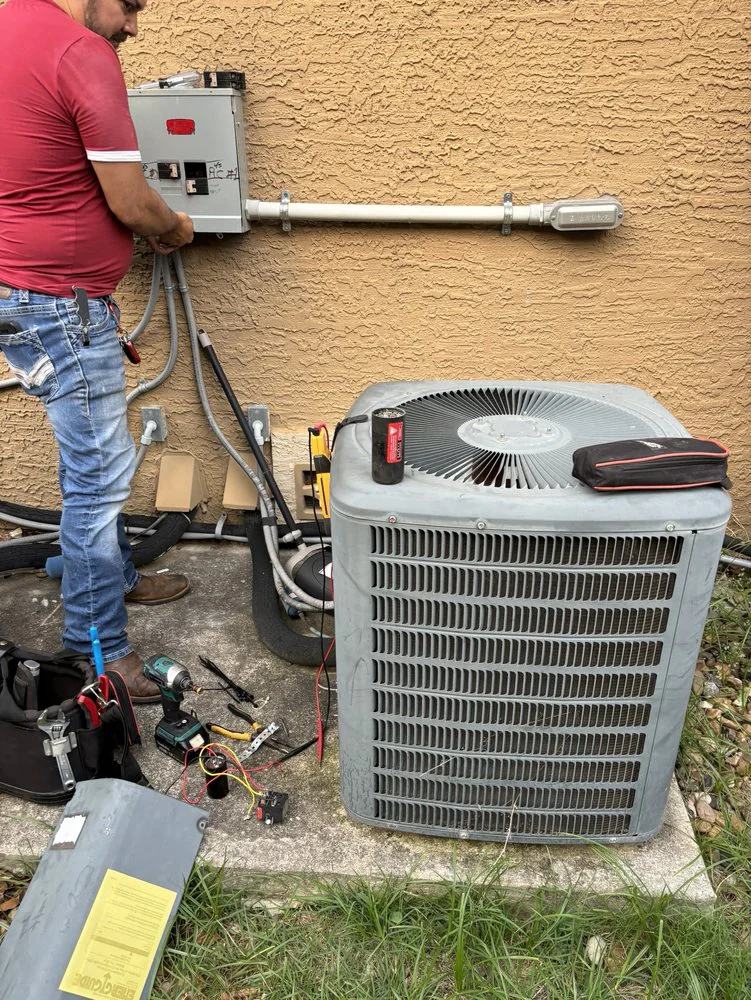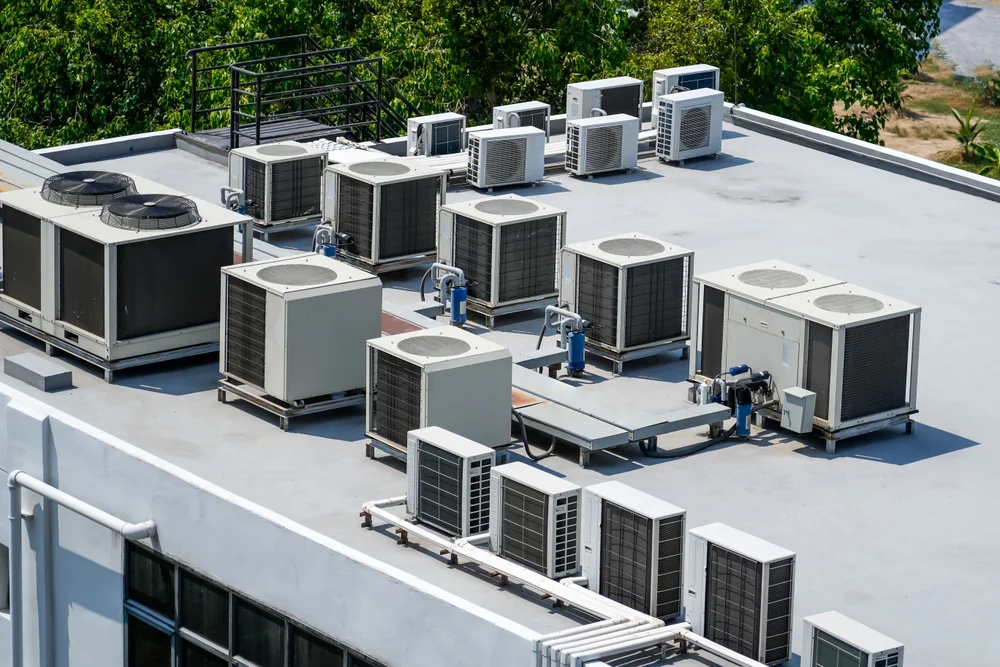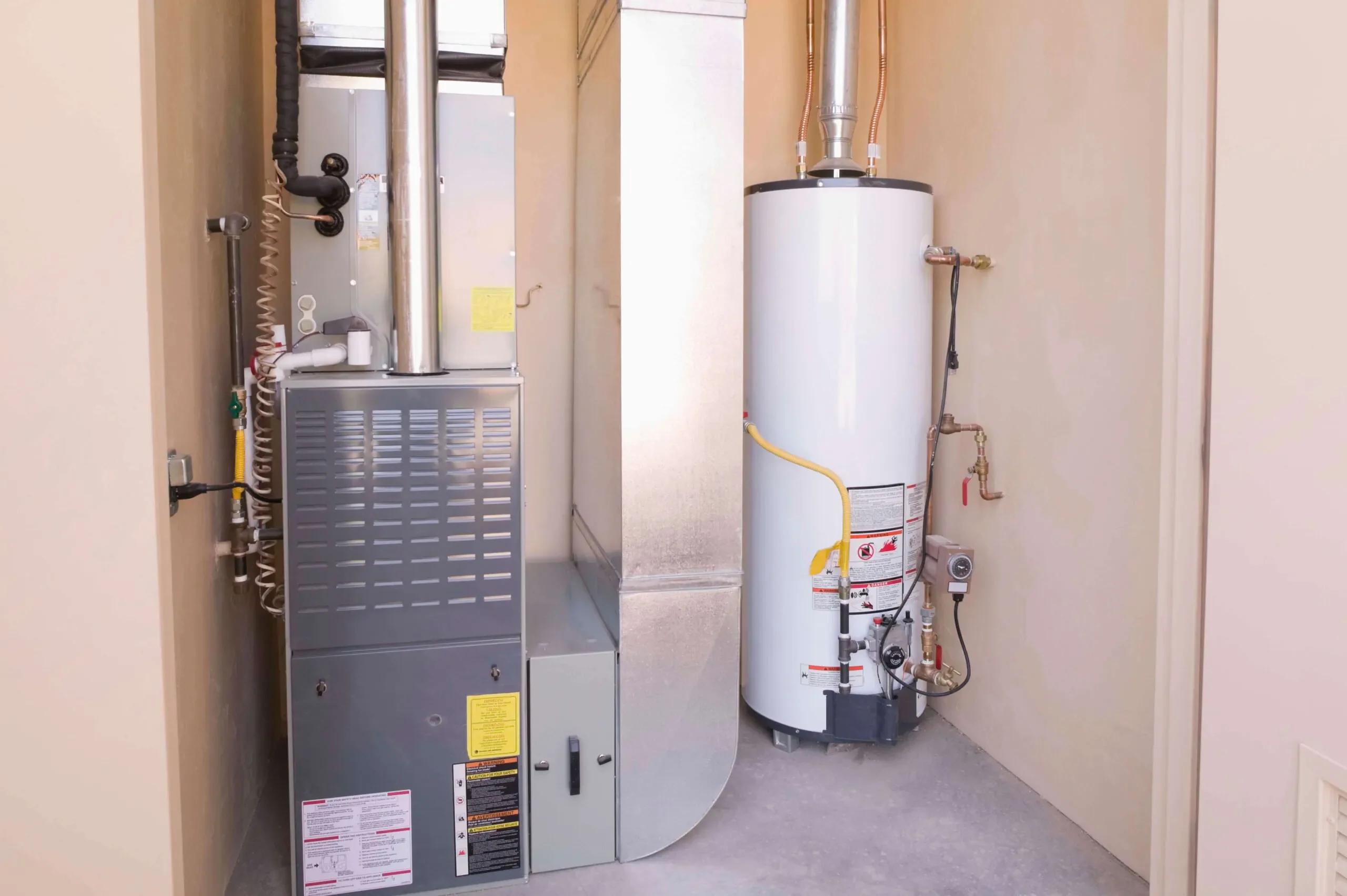Summary:
How Regular Professional Maintenance Extends AC Lifespan
Routine maintenance helps ensure a system runs efficiently, extends lifespan, and prevents costly breakdowns. Think of it like regular oil changes for your car—skip them, and you’ll pay the price later.
We recommend scheduling routine maintenance for your air conditioning system once or twice a year to extend its lifespan and ensure you aren’t paying too much for monthly energy bills. In San Antonio’s climate, this isn’t optional—it’s essential for protecting your investment.
The math is simple: annual maintenance costs around $150-300, while premature AC replacement runs $3,000-8,000+.
What Happens During Professional AC Maintenance
Professional AC maintenance goes far beyond what you can do yourself. A comprehensive service includes inspecting the AC unit’s components including the compressor, condenser, and evaporator coils, checking refrigerant levels to ensure they’re at correct levels, cleaning air filters for proper airflow and air quality, checking and tightening electrical connections, calibrating the thermostat for accurate temperature readings, and checking the drainage system.
Professional tune-ups identify and address minor issues before they become major problems, helping prevent costly repairs or premature replacement and prolonging the lifespan of your air conditioning system. This proactive approach catches problems when they’re still cheap to fix.
During peak summer months in San Antonio, your AC runs almost constantly. Professional maintenance includes checking coolant levels, testing fan operation, and cleaning coils, while routine checks can identify issues like minor leaks or emerging wear and tear before they escalate into costly repairs. Without this attention, small problems compound into system-killing failures.
Most homeowners are surprised by what we find during routine maintenance. Dirty coils that reduce efficiency by 30%. Refrigerant leaks that force your compressor to work overtime. Electrical connections that are one hot day away from failure. These issues don’t announce themselves—they quietly shorten your AC’s life until it’s too late.
The Best Maintenance Schedule for San Antonio's Climate
Plan on having your heating system maintained in the fall and your air conditioning system maintained in the spring. In San Antonio, this timing is critical because you’re asking your AC to perform when temperatures hit triple digits.
Regular AC maintenance should be performed at least twice a year, usually one before winter and one before summer. But here’s what most contractors won’t tell you: in Texas, your spring tune-up is more important than anywhere else because your system will work harder over the next six months than systems in cooler climates work all year.
Scheduling an AC tune-up before the summer hits offers numerous benefits, as San Antonio is known for its scorching summer temperatures, making a reliable air conditioning system essential, and ensuring your AC unit is in optimal condition becomes a top priority as the mercury rises.
The ideal schedule for San Antonio: comprehensive service in March before the heat hits, and a second check in October to address any wear from the brutal summer. During high-use times, the air filter should be changed every month to cut down on wear and tear that would otherwise affect the lifespan of the unit, but if you’re using your AC more occasionally, change the filter every third month.
Many homeowners make the mistake of waiting until something breaks. By then, the damage is often done. Small issues with your air conditioner can lead to bigger ones, which could end with an AC replacement. The spring tune-up catches these issues when they’re still minor.
Essential Homeowner Maintenance That Actually Matters
Professional maintenance is crucial, but what you do between service calls matters just as much. The good news: the most impactful maintenance tasks are also the simplest.
Dirty filters restrict airflow, causing the unit to work harder which can lead to breakdowns and premature wear and tear, so change or clean the filters every 1-3 months to maintain efficient operation. In San Antonio’s dusty environment, this timeline becomes even more critical.
Your outdoor unit needs attention too. Ensure that the area around your outside condenser unit is clear of debris such as leaves, grass, and dirt, as blocked airflow can cause the system to overheat and work harder than necessary.
The Filter Change Strategy That Extends AC Life
Here’s what most homeowners get wrong about filters: they think any filter works, and they wait too long to change them. Both mistakes cost you years of AC life.
You must clean or replace the filter every 2 months, as many homeowners neglect this step and end up having a clogged or underperforming AC, and when the filter is clogged, it will block the airflow, forcing the cooling unit to operate longer and harder, consequently damaging your AC and requiring heavy repairs.
In San Antonio’s climate, your filter works overtime. Dust, pollen, and debris from our frequent weather changes clog filters faster than in milder climates. During high-use times, the air filter should be changed every month to cut down on wear and tear that would otherwise affect the lifespan of the unit.
The right filter matters too. Cheap fiberglass filters do little beyond catching large debris. Mid-grade pleated filters catch more particles without restricting airflow. High-efficiency filters can actually harm your system if your unit wasn’t designed for them—they restrict airflow and make your system work harder.
Check your filter monthly during summer. If it looks dirty, change it regardless of the timeline. Your AC will thank you with years of additional service. Dirt can build up inside your air conditioner and end up getting into your system’s ducts as well as into the unit and its drains, while water can also collect and back up, which leads to the unwanted growth of mold and mildew, but regular tune-ups can help your home or business experience better air quality.
Smart Thermostat Settings That Reduce System Wear
Your thermostat settings directly impact how long your AC lasts. When your thermostat is set to a much lower temperature than the outdoor air, your AC has to strain to meet your cooling needs, and the more strain put on your AC, the shorter its lifespan, while the smaller the difference between your set thermostat temperature and the outdoor temperature, the less your AC will work and the more money you will save.
Set your thermostat to an energy-efficient temperature, typically between 75°F and 78°F, as overcooling your home can strain the unit and decrease its lifespan. In San Antonio, where outdoor temperatures regularly hit 100°F+, every degree matters.
To avoid strain, if the temperature outside is 100°+, set your thermostat closer to 80° than 65°, and you could also increase your thermostat temperature whenever you’re asleep or out of the house by 7-10°F from your thermostat’s normal setting, which can help you save 10% on your energy bills and reduce strain on your AC.
Smart thermostats take this further by learning your schedule and adjusting automatically. A programmable thermostat can help manage cooling schedules, enhance efficiency, and lower wear and tear on the system. The key isn’t just saving energy—it’s reducing the total runtime hours your AC accumulates over its lifetime.
Consider this: an AC that runs 12 hours daily at 72°F will accumulate significantly more wear than one that runs 8 hours daily at 76°F. Over 15 years, that difference adds up to thousands of hours of additional runtime—and potentially years off your system’s life.
Protecting Your Investment in San Antonio's Climate
The specific climate where you live can play a significant role in your cooling system’s life expectancy, as your air conditioner is susceptible to wear and tear, and the more you use your air conditioner, the more likely it is to break down quicker, while extreme outdoor conditions such as severe heat, high humidity, and intense winds can cause extensive and irreparable damage to your outdoor unit.
The reality is simple: proper maintenance can add 5-10 years to your AC’s life, even in our demanding climate. Proper upkeep extends the lifespan of your system and increases its efficiency, leading to significant financial savings. The homeowners who get 18-20 years from their systems aren’t lucky—they’re consistent with maintenance.
If you’re serious about protecting your investment, partner with a maintenance team that understands San Antonio’s unique challenges. We’ve served San Antonio families for over 30 years, and we’ve seen firsthand how the right maintenance approach transforms AC longevity. Your comfort and your wallet will thank you.




